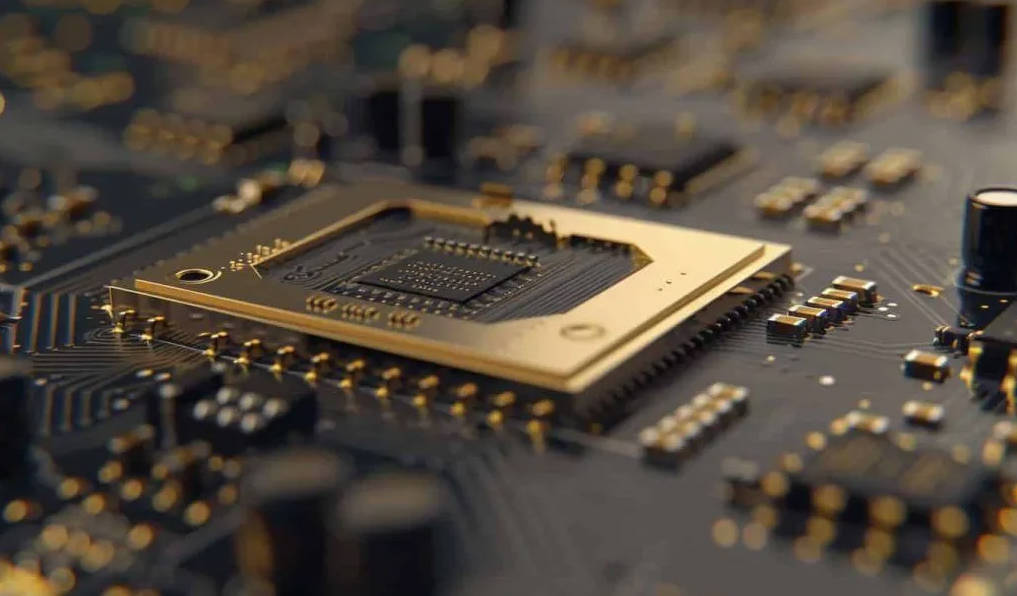- 1. Introduction
- 2. Understanding PCB Design Software
- 3. Common Questions and Concerns of PCB Design Users
- 4. Comparison of Popular EDA Tools
- 5. Choosing the Right EDA Tool for Your Project
- 6. Addressing Common Pain Points
- 7. Real-World Use Cases
- 8. Tips for Getting Started
- 9. Conclusion
1. Introduction
Choosing the right Electronic Design Automation (EDA) tool is one of the most critical decisions you’ll make in any electronics project. The software you select will influence everything from design efficiency and project cost to the final quality and manufacturability of your Printed Circuit Board (PCB). With a crowded market of powerful tools, each with its own strengths, weaknesses, and pricing models, making an informed choice can be daunting.
This comprehensive guide is designed for engineers, students, hobbyists, and project managers who are navigating the complex landscape of PCB design software. We will delve into what EDA tools are, compare the industry’s leading software, and provide a clear framework to help you select the perfect tool for your specific needs. By the end of this article, you will have a clear understanding of the key features to look for and the confidence to choose a software solution that aligns with your project’s complexity, budget, and long-term goals, whether you’re designing a simple breakout board or a complex multi-layer system for a leading-edge PCB manufacturing service.

2. Understanding PCB Design Software
What is an EDA Tool?
An Electronic Design Automation (EDA) tool is a software suite used to design and verify electronic systems, most notably integrated circuits (ICs) and Printed Circuit Boards (PCBs). In the context of PCB design, an EDA tool provides an integrated environment for the entire workflow, from conceptual schematic to the physical layout and generation of manufacturing files. These tools are indispensable for modern electronics, replacing the manual drafting methods of the past and enabling the creation of incredibly complex and dense circuits.
Key Functions of PCB Design Software
A modern EDA suite for PCB design is not just a single program but a collection of interconnected modules that handle specific tasks:
- Schematic Capture: This is where the logical design of the circuit is created. Engineers place symbols representing electronic components (resistors, capacitors, ICs, etc.) and draw wires to connect them, defining the circuit’s functionality. The output is a schematic diagram, which serves as the blueprint for the PCB layout.
- Component Library Management: Every component in the schematic has a corresponding physical footprint for the PCB. The library manager stores these symbols, footprints, and associated data (like manufacturer part numbers and 3D models). Robust library management is crucial for design accuracy and efficiency.
- PCB Layout and Routing: This is the process of translating the schematic into a physical board design. It involves placing the component footprints onto the board outline and then drawing the physical copper traces (routing) that connect them according to the schematic’s netlist. This stage determines the board’s size, shape, and electrical performance.
- Simulation and Analysis: Many professional EDA tools include simulation capabilities to verify circuit behavior before manufacturing. This can include SPICE (Simulation Program with Integrated Circuit Emphasis) for analyzing circuit performance, signal integrity (SI) analysis to check for issues in high-speed designs, and thermal analysis to predict heat dissipation.
- Design Rule Checking (DRC) and Manufacturing Output: Before sending a design for fabrication, it must be checked against the manufacturer’s capabilities. DRC automatically verifies that the layout (e.g., trace widths, clearances, via sizes) adheres to a set of predefined rules. Once verified, the software generates the necessary output files, most commonly Gerber files and a Bill of Materials (BOM), for the PCB manufacturing service.
Why Choosing the Right Tool Matters
The choice of an EDA tool significantly impacts project outcomes. An underpowered tool can limit design complexity and create manufacturing errors, while an overly complex and expensive tool can be a budgetary burden and slow down development with a steep learning curve. The right tool enhances productivity, ensures design integrity, streamlines collaboration, and ultimately contributes to a successful product launch.
3. Common Questions and Concerns of PCB Design Users
When selecting PCB design software, users typically have a recurring set of questions. Addressing these concerns is key to finding the right fit.
- Ease of Use: “How steep is the learning curve?” A tool with an intuitive UI can get a beginner started quickly, while a professional might prioritize powerful, scriptable features over a simple interface.
- Cost and Licensing: “Is it free, a subscription, or a perpetual license?” The cost can range from free (for open-source tools) to thousands of dollars per year per seat. Understanding the total cost of ownership is crucial.
- Compatibility and Integration: “Can I import old projects or work with my mechanical engineering team?” The ability to import/export standard file formats (Gerber, ODB++, DXF) and integrate with MCAD software is vital for collaborative projects.
- Features and Capabilities: “Does it support high-speed design, RF, or multi-board systems?” A simple hobby project has very different needs than a high-frequency communication device. The feature set must match the project’s technical requirements.
- Scalability: “Will this tool grow with my needs?” A tool that is great for a 2-layer board may struggle with a 16-layer high-density interconnect (HDI) design. Scalability ensures you won’t have to switch software mid-stream.
- Community and Support: “Where can I get help if I get stuck?” The availability of official support, active user forums, and extensive tutorials can save countless hours of frustration.
- Performance: “How does it handle large, complex designs?” Software performance, especially with large component counts and complex routing, can be a major productivity factor.
4. Comparison of Popular EDA Tools
Here, we compare some of the most popular EDA tools on the market, each catering to different segments of users.
Tool-by-Tool Breakdown
Altium Designer
- Overview: Altium Designer is a professional, high-end EDA tool known for its comprehensive, unified design environment. It is a top choice for corporate engineering teams and professionals working on complex, high-tech products.
- User Interface and Learning Curve: Powerful and feature-rich, but comes with a steep learning curve. Its unified interface, where schematic, layout, and library are tightly integrated, is a major strength.
- Feature Set: Offers advanced features for high-speed design (impedance control, length tuning), rigid-flex PCB design, multi-board assembly, and powerful 3D visualization. Its Draftsman tool for generating fabrication drawings is best-in-class.
- Cost: High. Typically sold as a subscription, making it an investment suited for commercial use.
- Best For: Professional engineers and organizations that require a full-featured, powerful, and integrated tool for complex electronic products.
KiCad
- Overview: KiCad is a free, open-source EDA suite that has gained immense popularity and credibility over the years. It is developed by a community of volunteers and backed by corporate sponsors, including CERN.
- User Interface and Learning Curve: The UI has improved significantly and is now quite modern. The learning curve is moderate, and its workflow is logical once understood.
- Feature Set: Surprisingly powerful for a free tool. It supports up to 32 copper layers, has a push-and-shove router, offers differential pair routing, and includes a 3D viewer. It may lack some of the advanced simulation and collaboration features of paid tools, but it is more than capable for most professional work.
- Cost: Completely free. There are no licensing fees or feature limitations.
- Best For: Hobbyists, students, startups, and small businesses looking for a powerful, cost-effective, and cross-platform EDA solution.
Autodesk Eagle
- Overview: Eagle (now part of Autodesk’s Fusion 360 ecosystem) has been a long-time favorite among hobbyists and professionals, especially in the open-source hardware community.
- User Interface and Learning Curve: Eagle has a unique, sometimes considered quirky, command-line-driven feel, though its UI is functional. The learning curve is moderate. Its integration with Fusion 360 is a significant advantage for electro-mechanical projects.
- Feature Set: The free version is limited in board size and layer count. The paid version is very capable, offering a solid schematic capture editor, PCB layout tool, and a large ecosystem of User Language Programs (ULPs) for extended functionality.
- Cost: Offered as a subscription. A limited free version is available for non-commercial use. The full version is affordably priced for small businesses.
- Best For: Hobbyists, makers, and professionals working on small to medium-sized projects, especially those who can benefit from its integration with Fusion 360’s mechanical design capabilities.
OrCAD (by Cadence)
- Overview: OrCAD is a powerhouse EDA tool from Cadence, a leader in the electronic design industry. It is known for its best-in-class PSpice simulator and is a staple in many large engineering corporations.
- User Interface and Learning Curve: The interface is considered more traditional and can be complex for new users. The learning curve is steep, but the tool is exceptionally powerful and reliable.
- Feature Set: Its main strength is advanced circuit simulation and analysis. It provides a scalable solution from a basic PCB design package to a full enterprise-level suite with signal integrity analysis and thermal simulation.
- Cost: High. OrCAD is a premium, professional tool with a price tag to match, typically sold as a perpetual license with maintenance.
- Best For: Enterprises and engineers focused on high-performance analog and mixed-signal circuits that require robust simulation and verification.
Autodesk Fusion 360 (with Electronics Design)
- Overview: Fusion 360 is an integrated CAD, CAM, CAE, and PCB design platform. It incorporates the core functionality of Autodesk Eagle directly within its mechanical design environment, offering a seamless workflow for products that require tight electro-mechanical integration.
- User Interface and Learning Curve: The UI is modern and consistent across its mechanical and electronic design workspaces. Users familiar with 3D modeling software may find it more intuitive than traditional EDA tools.
- Feature Set: The key feature is the unparalleled integration between PCB and 3D mechanical design. Changes to the PCB shape or component placement are instantly reflected in the 3D model, and vice-versa.
- Cost: Available via subscription, which is very competitively priced, especially considering the full suite of mechanical design and manufacturing tools included.
- Best For: Product designers, startups, and teams creating devices where the mechanical enclosure and PCB are designed in tandem (e.g., IoT devices, wearables).
Comparison Table
| Feature | Altium Designer | KiCad | Autodesk Eagle (Fusion 360) | OrCAD (Cadence) |
|---|---|---|---|---|
| Target User | Professionals, Enterprises | Hobbyists, SMEs, Professionals | Hobbyists, SMEs, Electro-Mechanical Designers | Enterprises, Simulation-focused Engineers |
| Cost | High (Subscription) | Free (Open-Source) | Low-Mid (Subscription), Free version available | High (Perpetual + Maintenance) |
| Learning Curve | Steep | Moderate | Moderate | Steep |
| Key Strength | Unified environment, High-speed design | Powerful, Free, Strong Community | MCAD Integration, Large ULP library | PSpice Simulation, Scalability |
| Platform | Windows | Windows, macOS, Linux | Windows, macOS | Windows |
| High-Speed Features | Excellent | Good (Differential pairs, length matching) | Good | Excellent (with advanced options) |
| 3D Visualization | Excellent | Good | Excellent (via Fusion 360) | Good |
5. Choosing the Right EDA Tool for Your Project
So, how do you make the final decision? The best PCB design software is the one that aligns with your specific project complexity, budget, and skill level. Use the following framework to guide your choice.
Assessing Project Requirements
- Project Complexity: Are you designing a simple 2-layer board or a 20-layer board with BGA components and controlled impedance? The more complex the design, the more you will need advanced features like those in Altium or OrCAD.
- Team Size and Collaboration: Are you working alone or with a team? Tools with strong collaboration features, like Altium 365 or Fusion 360’s cloud-based platform, are ideal for distributed teams.
- Budget Constraints: If your budget is limited, KiCad is an unbeatable choice. If you can afford a subscription, Autodesk Eagle offers a great balance of price and performance. High-end tools are for well-funded commercial projects.
- Specific Design Needs: If your project involves high-frequency RF signals, high-speed digital interfaces (like DDR4 memory), or requires extensive analog simulation, you need a tool with specialized capabilities in those areas (e.g., OrCAD for simulation).
User Skill Level
- For Beginners: KiCad and the free version of Autodesk Eagle are excellent starting points. They have large, helpful communities and a wealth of online tutorials.
- For Advanced Users: Professionals who need maximum efficiency and power will gravitate towards Altium Designer or OrCAD. These tools offer automation, scripting, and advanced analysis features that can dramatically speed up complex designs.

6. Addressing Common Pain Points
- Learning Curve: Overcome a steep learning curve by investing time in official training, following tutorials from trusted sources, and actively participating in user forums. Don’t be afraid to start with a simpler tool to learn the fundamentals of PCB design.
- Cost Management: For startups and individuals, free tools like KiCad are transformative. For businesses, view the cost of an EDA tool as an investment in productivity. A powerful tool can save thousands of dollars in engineering time and reduce the number of board revisions.
- Collaboration: For electro-mechanical projects, the tight integration of Fusion 360 is a game-changer, preventing issues with component-to-enclosure collisions. For purely electronic teams, cloud-connected platforms like Altium 365 streamline library sharing and design reviews.
- Manufacturing Handoff: All reputable EDA tools can generate standard Gerber files. However, professional tools often provide more robust output generation, creating a complete documentation package (including BOM, assembly drawings, and pick-and-place files) that minimizes the risk of errors at the PCB manufacturing service provider.
7. Real-World Use Cases
Hobbyist Example: A student building a custom IoT weather station.
The design is simple, with a microcontroller, a few sensors, and a power circuit on a 2-layer board. Recommended Tool: KiCad. It’s free, has all the necessary features, and a huge community to help with any problems.
SME Example: A small engineering firm designing a custom controller for an industrial machine.
The board is 6 layers, involves a moderately high-speed processor, and needs to fit into a custom-machined enclosure. Recommended Tool: Autodesk Fusion 360 (with Electronics). The seamless MCAD integration is perfect for ensuring the board fits the enclosure perfectly. The subscription cost is manageable for a small business.
Enterprise Example: A large technology company developing a next-generation server motherboard.
The design is extremely complex (18+ layers), with high-speed DDR5 memory, PCIe Gen 5 interfaces, and strict thermal constraints. Recommended Tool: Altium Designer or OrCAD. These tools provide the necessary signal integrity analysis, power distribution network (PDN) analysis, and collaboration features required for a large team working on a cutting-edge, high-performance product.
8. Tips for Getting Started
- Use Free/Trial Versions: Before committing to a purchase, always take advantage of free versions or trial periods. Spend a few hours completing a small project from schematic to layout to see if the workflow feels right for you.
- Leverage Learning Resources: All the tools listed have extensive documentation. Supplement this with tutorials on YouTube, specialized blogs, and official training materials.
- Engage with the Community: User forums and communities are invaluable resources. You can get answers to specific questions, see how others solve problems, and stay up-to-date on new features.
- Organize Your Libraries: One of the best practices for efficient PCB design is to maintain well-organized component libraries. Ensure your symbols, footprints, and 3D models are correct and consistently named.
9. Conclusion
The landscape of EDA tools for PCB design is richer and more accessible than ever before. There is no single “best” software, only the best software for your project. By carefully evaluating your project’s technical requirements, your budget, your team’s skillset, and your long-term goals, you can confidently select a tool that will not only get the job done but will also be a pleasure to use. Whether you choose the open-source power of KiCad, the integrated ecosystem of Autodesk, or the enterprise-grade capabilities of Altium and Cadence, the right tool will empower you to turn your electronic ideas into reality.




